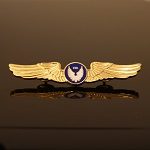FORUM › Forums › Software › CLS2SIM Software › Flight Simulation Software › Prepare3D V1-V4 › CLS2Sim turbulence
Tagged: CLS2Sim, FSX, P3D, turbulence
- This topic has 2 replies, 2 voices, and was last updated 7 years, 1 month ago by
 webmaximus.
webmaximus.
-
AuthorPosts
-
16/06/2017 at 15:30 #381
 webmaximusParticipant
webmaximusParticipantI have a question on the turbulence setting in CLS2Sim.
Reading through the help file it sounds like the turbulence generated by CLS2Sim is generated on a random basis but at the same time tied to the actual weather in the simulator and how windy it is.
When using a wx engine such as AS16 in my case which has it’s own settings for turbulence I guess the best option would be to disable the turbulence feature in CLS2Sim so they won’t interfere with each other?
Main reason for my question is I’ve noticed how the yoke will try to bank quite hard to the right and left a couple of times shortly after t/o in the PMDG NGX even when the weather doesn’t indicate there would be that kind of severe turbulence and I can’t recall I ever felt this when I’ve been in 737 NG Level D FFS.
Would be interesting with some input on this.
Then I hope the profile cloud isn’t too far off including a proper and realistic setup profile for the NGX. Maybe you could even find some real 737 NG driver that could help you setup the profile to assure it will be as close to the real thing as possible.
Would be awesome!
Cheers,
Richard
19/06/2017 at 15:58 #388 Diego BürginKeymaster
Diego BürginKeymasterHi Richard
Some input on turbulence:
How it works in P3D/MSFX
Turbulence is implemented essentially by reading the Data from “AIRCRAFT WIND X/Y/Z”. As the data has a big amount of jitters even when there is no wind and the rate of reading data is limited by other factors (other higher priority communication like position updates), the output is somewhat random.
Now we add some strong filtering to get a curve from this. We set a threshold using the sensitivity setting and act only on inputs surpassing it.
The ramp setting decides how twitchy or smooth the movements should be.Now the banking of the yoke is the result of input data over the threshold.
The reason that you feel aileron instead of elevator movement is that the vibrations are currently on aileron only.
Putting the turbulence on the elevator axis caused problems with gear and motor vibrations due to hard- and firmware limitations.Getting the right feel
To get a relatively good result, you have to play around with the settings. Results will also vary with different air speeds, so you might get a good result at low speed, or slight winds, but exaggerated results at stormy weather. It will be difficult finding a sweet spot.
If you are using a plane model with custom turbulence implementation, it may well be that turbulence will feel outright wrong.
In that case you can really only deactivate the turbulence feature, except for the remote interface option.For people with programming experience, we’ve added support for vibration control to the remote interface a while back.
So it would be technically be possible to implement better support for turbulence when using third-party aircraft.
Well if anyone manages to create a better working turbulence system using the API, my hat off to you!Yes profile cloud is not far off 🙂
19/06/2017 at 16:19 #389 webmaximusParticipant
webmaximusParticipantMany thanks for the thorough explanation Diego, much appreciated!
For now I’m using CLS2Sim with turbulence disabled only relying on the turbulence injected into P3D by AS16. This got rid of the hard banking left and right shortly after takeoff.
Might play around more with this further down the road but for the time being I’m pretty happy with what I’ve got right now.
Cheers,
Richard
-
AuthorPosts
- You must be logged in to reply to this topic.

